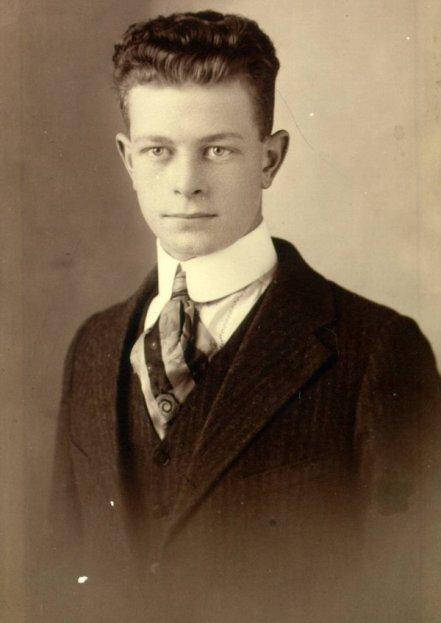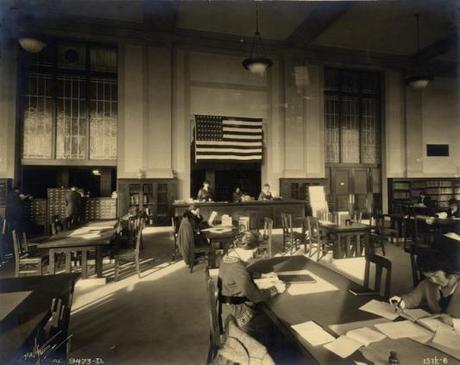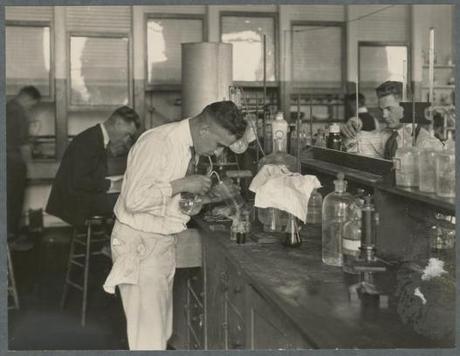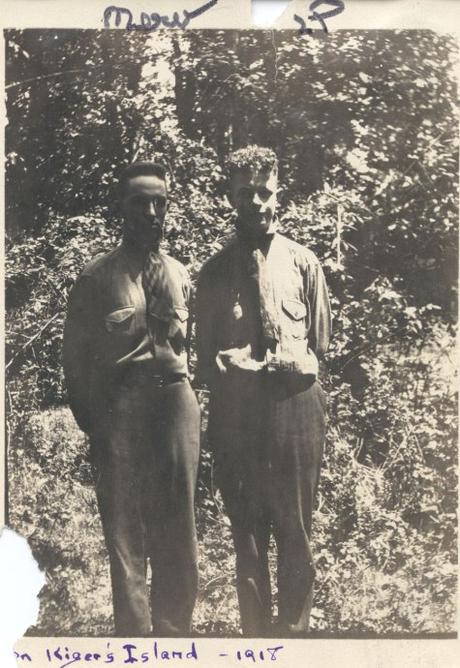
Linus Pauling, age 17.
[Ed Note: Another academic year begins this week at Oregon State University. This fall also marks the 100th anniversary of Linus Pauling’s sophomore year at what was once known as Oregon Agricultural College. This is post 1 of 3 looking back on Pauling’s experience of the 1918-1919 school year.]
On September 23, 1918, a Monday, 350 sophomore students returned to Oregon Agricultural College to resume their classes after a long summer break. Among them was seventeen-year-old Linus Pauling who, because of his ROTC commitments, had split his vacation between an intensive six-week military training course at the Presidio Army post in San Francisco, and a job working at a shipyard in Tillamook, Oregon.
Pauling was excited to return to Corvallis because it meant that he could once again frolic with his first love, chemistry. A Chemical Engineering major in OAC’s College of Mines, Pauling thoroughly enjoyed his courses. He also appreciated the overall college experience and felt comfortable in the close-knit community that OAC embraced and advertised.
A total of 4,086 students registered at OAC throughout the 1918-1919 school year, and among them were 86 Chemical Engineers. More popular majors at the Land Grant school included Mechanical Engineering – which accounted for a quarter of enrolled students – Agriculture, Home Economics, and Commerce.
Fall term also marked the opening of a new academic unit at OAC, the School of Vocational Education. Included within this unit were the departments of Education, Psychology, Agricultural Education, Home Economics Education, and Industrial Education. The stated mission of the new school was to “train teachers in vocational lines for secondary and higher education.” And while this ambition was squarely in line with the broader charge of the college, World War I had also pulled many local teachers away, leaving Oregon’s communities in dire need of more instructors to take their place.

The reference area in OAC’s new library, housed in current-day Kidder Hall. 1918.
The beginning of a new school year likewise brought with it the opening of OAC’s first designated library, located in what is now known as Kidder Hall. The building was so named in 1964 to honor the first professional librarian to staff the building, Ida A. Kidder, a beloved faculty member whom many referred to as “Ma Kidder.”
Indeed, OAC was in the midst of a period of significant maturation during this time and many faculty members who were then active on campus are now remembered through buildings that bear their name. These individuals include William Jasper Kerr (president of OAC), Ava B. Milam (Dean of Home Economics), Clara H. Waldo (first woman to serve on the OAC Board of Regents), John Andrew Bexell (Dean of the School of Commerce), and others. In 2011, Linus Pauling joined their ranks when the Linus Pauling Science Center was formally dedicated on the western edge of campus.

Students working in an OAC chemistry lab, circa 1915.
Throughout the school year, Pauling was employed in a chemistry lab, preparing solutions for his fellow students to use in their coursework. Since his father’s death eight years prior, Pauling and his family had been confronted with a severe financial burden and young Linus had been compelled to work to bolster the household economy. This trend continued at OAC, where his wages were meant to fund his higher education, which he valued so deeply. During this time, Pauling had been storing his money with his mother, Belle, in Portland, and she had been unknowingly using the savings to keep herself and her two daughters afloat. This turn of events would become the source of a major interruption to Pauling’s education down the road.
Two disruptions of more immediate concern defined much of Pauling’s sophomore year: U.S. involvement in World War I and the deadly outbreak of Spanish Influenza. The arrival of the flu wreaked havoc on Corvallis students from the outset of the term: within the first month of fall, four students had fallen ill and a handful of new cases were being reported each week. In response, OAC converted it’s YMCA/YWCA facility, present-day Shepard Hall, into a hospital to attend to all who had fallen ill. The college also brought in two nurses and a new physician specifically to handle the epidemic.

Mervyn Stephenson with his cousin at Kiger Island, south of Corvallis.
But amidst the seriousness of the times, the end of Pauling’s sophomore year did bring several pieces of exciting news. For one, Pauling’s cousin, Mervyn Stephenson, was set to graduate. Part of a graduating class of 130 students, Stephenson was one of five to complete a degree in civil engineering. Immediately following the completion of his coursework, Stephenson was taken on to work with famed bridge engineer Conde B. McCullough in southern Oregon.
That spring, OAC also received approval to begin construction of a new engineering building, present-day Graf Hall. This new space would include modernized lab equipment for OAC’s faculty and engineers-in-training, including a hydraulic testing center, a material testing center, and a steam and gas engine laboratory. While not directly focused on the needs of the college’s chemical engineers, the new space was an indication of OAC’s commitment to its engineering curriculum and surely a source of excitement for Linus Pauling and many others who inhabited his world.
